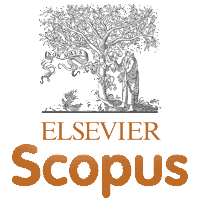THYROID DISEASE CLASSIFICATION USING MACHINE LEARNING ALGORITHMS
Abstract
Machine learning algorithms and data mining techniques play a significant role in handling data due to the overwhelming volume of information that can be challenging to handle, particularly in the health system. We employed machine learning algorithms with thyroid illness in our investigation. A thorough project aimed at applying machine learning algorithms to categorize thyroid illness based on patient data is the Thyroid illness Classification Project using Machine Learning. The research incorporates a dataset with different variables associated with patient characteristics and thyroid function testing. The method attempts to precisely categorize individuals into several thyroid disease categories, such as hypothyroidism, hyperthyroidism, or euthyroidism, by utilizing supervised machine learning algorithms. We used data from Iraqi people, some of whom have an overactive thyroid gland and others who have hypothyroidism, to work toward the objective of classifying thyroid illness into three categories: hyperthyroidism, hypothyroidism, and normal. All of the algorithms were employed in this study. Support vector machines, k-nearest neighbors, logistic regression, random forest, decision trees, naïve bayes, multilayer perceptron (MLP), and linear discriminant analysis. to categorize thyroid conditions. The thyroid gland is an essential hormone gland that affects the body's growth, development, and metabolism. By continuously delivering a regular amount of thyroid hormones into the circulation, it aids in the regulation of several bodily activities. Numerous follicular cells found in the thyroid gland store the thyroid hormones inside the thyroglobulin molecule until the body requires them. Almost all of the body's cells are impacted by the thyroid hormones, also known as the primary metabolic hormones. The hypothalamic-pituitary-thyroid system's development and the availability of tyrosine and iodine are prerequisites for the synthesis and release of thyroid hormones. Interruption of its development, as occurs with preterm birth, results in insufficient synthesis of thyroid-stimulating hormone and thyroxin, leading to a range of physiologic disorders. When there is an issue with the thyroid gland or inadequate synthesis of thyroid hormone, pathologic problems arise. Laboratory testing are helpful in detecting disorders of the thyroid gland. Certain thyroid problems can also be diagnosed with the use of a comprehensive history, clinical signs, and radiologic results. In addition to diagnosing and treating thyroid issues, nurses are crucial in offering newborns and their families supportive care. By offering a tool for the early diagnosis and categorization of thyroid problems, this research advances medical diagnostics and helps healthcare providers make well-informed decisions.





